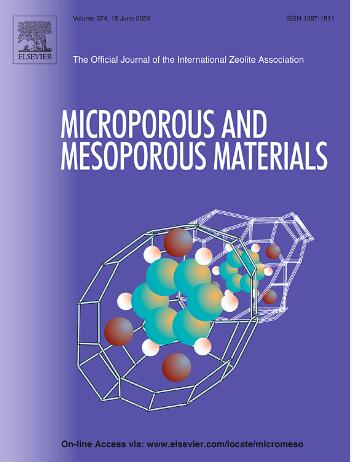Synthesis, derivation, and applications of imine-linked covalent organic frameworks: A comprehensive review
IF 4.8
3区 材料科学
Q1 CHEMISTRY, APPLIED
引用次数: 0
Abstract
Crystalline 2D and 3D covalent organic frameworks (COFs) are formed by covalent bonds connecting light elements through thermodynamically reversible reactions. Among the numerous COFs synthesised, imine-linked COFs formed from Schiff bases are important and occupy a major share. A significant increase in the exploration of imine-linked COFs due to their better hydrolytic stability and availability of substrates has been noticed in recent years. This review article delves into the synthesis, post-synthetic modifications, and applications of imine-linked COFs. Methodologies such as solvothermal, microwave-assisted, mechanochemical, sonochemical, electron beam, plasma-induced, light-driven, and room temperature synthesis have been explored. De novo synthesis and post-synthetic modifications further extend the functional characteristics of imine COFs, enabling tailored properties for specific applications. The potential of imine-linked COFs in addressing critical challenges is highlighted through their applications in carbon dioxide and iodine uptake, separation processes, catalysis, drug delivery, etc. Their appealing qualities, such as durability, enhanced reactivity from non-bonding electrons of nitrogen, permanent porosity, and large surface area, are highly effective for diverse applications. This article provides a detailed understanding of the current advancements in the field, offering insights into future research directions for developing more efficient and functional imine COFs.

求助全文
约1分钟内获得全文
求助全文
来源期刊

Microporous and Mesoporous Materials
化学-材料科学:综合
CiteScore
10.70
自引率
5.80%
发文量
649
审稿时长
26 days
期刊介绍:
Microporous and Mesoporous Materials covers novel and significant aspects of porous solids classified as either microporous (pore size up to 2 nm) or mesoporous (pore size 2 to 50 nm). The porosity should have a specific impact on the material properties or application. Typical examples are zeolites and zeolite-like materials, pillared materials, clathrasils and clathrates, carbon molecular sieves, ordered mesoporous materials, organic/inorganic porous hybrid materials, or porous metal oxides. Both natural and synthetic porous materials are within the scope of the journal.
Topics which are particularly of interest include:
All aspects of natural microporous and mesoporous solids
The synthesis of crystalline or amorphous porous materials
The physico-chemical characterization of microporous and mesoporous solids, especially spectroscopic and microscopic
The modification of microporous and mesoporous solids, for example by ion exchange or solid-state reactions
All topics related to diffusion of mobile species in the pores of microporous and mesoporous materials
Adsorption (and other separation techniques) using microporous or mesoporous adsorbents
Catalysis by microporous and mesoporous materials
Host/guest interactions
Theoretical chemistry and modelling of host/guest interactions
All topics related to the application of microporous and mesoporous materials in industrial catalysis, separation technology, environmental protection, electrochemistry, membranes, sensors, optical devices, etc.
 求助内容:
求助内容: 应助结果提醒方式:
应助结果提醒方式:


